By Lukas Schulte
Looking for an absolute hammer of a rifle cartridge with a long and storied history that still delivers good performance afield? Here’s what you need to know about the 8x68mm S cartridge.
You can hear and catch occasional glimpses of a massive bull elk moving behind a screen of trees bugling, raking, and chasing cows and lesser contenders. All of a sudden, he stops in a gap in the trees quartering towards you.
The bull stands there catching his breath for a handful of seconds just 250 yards away, but as quickly as he shows up, he turns around and walks out of your life forever.
Darkness falls upon the land a few minutes later, your hunt comes to an end, and you go home empty handed and with your tail between your legs because your sweet shooting 6.5mm cartridge wasn’t up to the task of punching through the shoulder of a big bull elk like that.
A full sized bull elk is huge. Humongous even.
In rare cases, a big bull Rocky Mountain Elk can weigh over 1,000 pounds on the hoof. Their Roosevelt Elk cousins are even larger and their massive bodies of heavy muscle, dense bones, and thick hide can weigh upwards of 1,200 pounds.
Their leg bones and muscles must be massive and strong enough to carry all that weight up and down steep mountains and their hulking shoulder blades can be up to 4 inches thick close to the joint.
The humerus on an elk is even thicker.
Now, imagine what it must take for a bullet to pierce that thick hide, plow through all the muscle tissue of the shoulder, crack through a bone of that size, penetrate the rib cage, and then continue on even farther just to reach lungs and heart.
Even more penetration is necessary to exit the other side of the elk to provide a good blood trail.
Not only must the bullet do that without stopping, but it must not deflect either. After all, the only thing more heartbreaking than a bad shot is a shot that’s placed on the money, but veers off its original path and misses the vitals.
That’s asking a lot out of a bullet if the the only shot presentation you get on your hunt is straight on the shoulder (and those shots are surprisingly common).
And it gets even tougher as the range increases.
A perfect broadside shot is a different story and lesser cartridges and bullets will certainly be enough for such a presentation. However, you don’t always get shots like that and hunters who want to take advantage of as many opportunities as possible must use a cartridge/bullet combination that’s capable of reaching the vitals from less than ideal angles.
Many cartridges are up to the task: the various .300 Magnums, the .338 Winchester Magnum, the fast 7mm cartridges with stout bullets are all good choices.
Interestingly, there’s a glaring gap in the North American cartridge landscape in that .323 inch/8mm diameter range. True, the .325 WSM and the 8 mm Remington Magnum fire .323 inch bullets, but both are rare at best.
Other than those two, there’s no other high powered cartridge in this specific bullet diameter. Or is there?
Yes, there is one cartridge you might not have heard of with enough horsepower to bring down true heavyweights in situations like I just described. The only problem is that it’s not that well known on the western side of the Atlantic Ocean.
A cartridge known as the 8x68mmS has a fervent following in Europe. In a time where trendy new cartridges, global economics, and just plain old availability dictate what people shoot, this cartridge somehow managed to stay alive and relevant well over 80 years after it hit the market in 1939.
In this article, I investigate the 8x68mmS in detail to give you an idea of what sort of performance you can expect from the cartridge and so you can decide if it best fits your needs as a hunter.
History Of The 8×68 S
Designers at the German munitions company RWS (Rheinisch-Westfälische Sprengstofffabriken) opted to build a new rimless bottlenecked rifle cartridge in the 1930s to serve as a potent option for big red deer, moose and bear in western and central Europe, as well Caspian Red Deer in Asia (also known as Maral), and the large antelope of Africa.
Additionally, they wanted a higher velocity magnum rifle cartridge with a flatter trajectory than the larger diameter 9.3x62mm Mauser that would also fit in a standard length Mauser 98 rifle action (unlike the longer .375 H&H Magnum).
In order to accomplish this, the engineers at RWS chose to use the popular 8mm S-bore diameter of .323″ and used a de novo rifle cartridge case (which is a fancy way of saying they built a new case that has no parent case) with a longer and fatter body than other 8mm rounds of the day.
Plus, they loaded the cartridge to a relatively high maximum chamber pressure of 4400 bar (roughly 64,000 psi).
The result was a new, higher velocity round that would handily surpass other 8mm rounds in common use at the time like the 8mm Mauser, the 8x64mmS, and the 8x75mmS in both the velocity and energy departments.
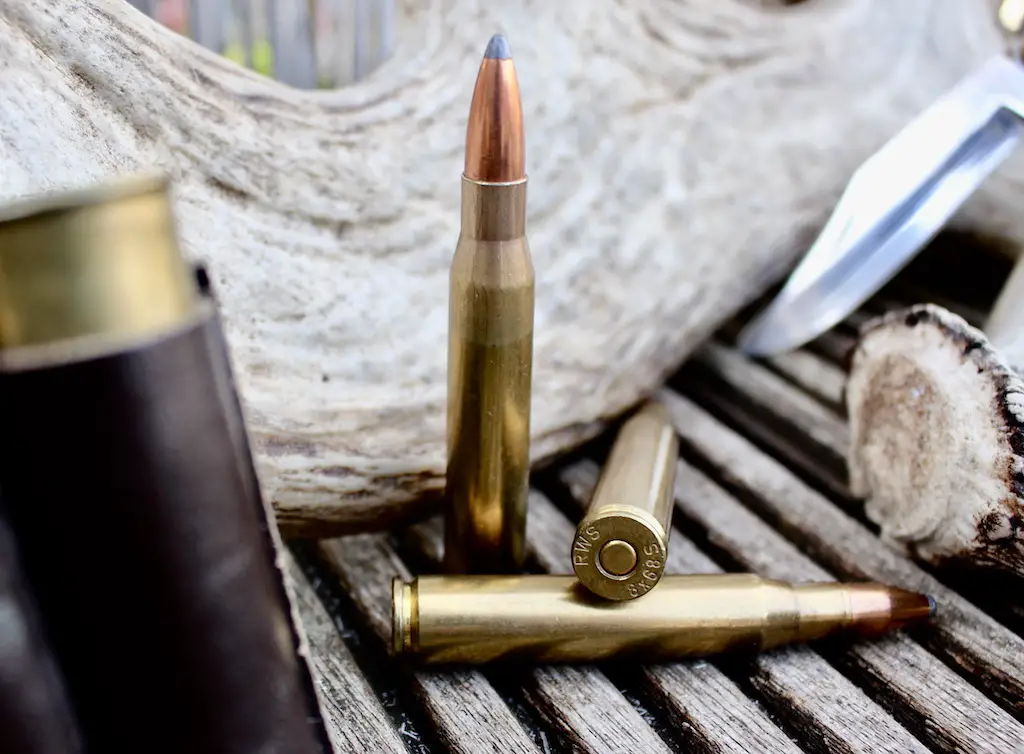
For example, current RWS loadings for the 8×68 S launch a 139gr (9.0g) Evolution Green bullet at 3,343fps, (1,019 m/s), a 160gr (10.4g) HIT bullet at 3,182fps, (970 m/s), and a 186gr (12.1gr) H-Mantel bullet at 3,100fps (945 m/s).
Compare that to identical RWS loads for the 8 mm Mauser firing that 139gr (9.0g) Evolution Green bullet at 3,018fps, (920 m/s), a 160gr (10.4g) HIT bullet at 2,723fps, (830 m/s), and that 186gr (12.1gr) H-Mantel bullet at 2,591fps (790 m/s).
That works out to a 325-509fps (99-155 m/s) advantage for the 8×68 S over the 8mm Mauser with the exact same bullet!
One one hand, that extra velocity does result in an extremely flat trajectory, lots of retained energy, and a longer effective range.
One the other hand, a high velocity cartridge like that needs good bullets for optimum performance. Fortunately for the 8x68mm S, good bullets were available from the very start.
For instance, RWS offerings like the H-Mantle as well as the TIG and TUG bullets by Brenneke could withstand the higher impact velocities the new German 8mm Magnum generated and all were devastating on European game.
After a bit of a rough start due to the outbreak of World War II right after it hit the market, the 8x68S soon found widespread use in the hands of German hunters in the 1950s. The 8x68mmS earned a stellar reputation as a flat shooting and hard hitting hunting round in Europe.
This heavy hitting 8mm cartridge is a terrific option for hunters who want to engage tough and heavy game at longer range with authority. There is no game animal in Europe that’s too big of a challenge with the right 8×68 S load in the right shooter’s hands.
Though they typically top out around 500-600 pounds (226-272kg), the largest specimens of red deer can weigh over 1000 lbs (453kg). Moose and European brown bear can get even larger.
By the same token, the cartridge also isn’t necessarily too big for use on smaller game like roe deer either and a bullet like the RWS H-Mantle will cleanly kill game that size without causing excessive damage to their hide or meat either.
In addition to doing yeoman’s work in Europe, the 8x68mm S also earned part of its extraordinary reputation in Africa in the hands of German travelers and farmers of German ancestry.
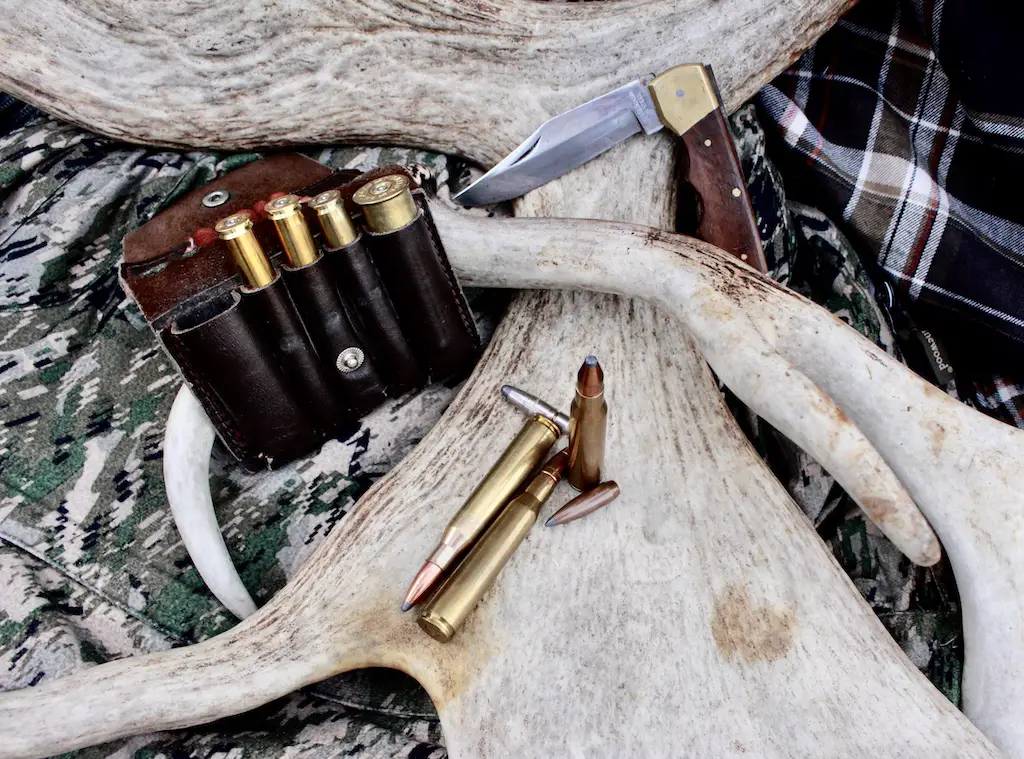
The gigantic species of African plains game like eland species are even larger in some cases (a big bull eland will weigh over 2,200 pounds or 1,000kg).
Even the relatively smaller kudu, sable, roan and the like are by no means small animals either and big bulls will rival red deer or American elk in size! Well, the 8x68mm S performed admirably on all of those animals (as well as smaller ones like impala, springbok, and gazelle) in Africa.
And of course, the 8x68mm S will also deliver excellent performance on game like red stag, wapiti, chamois, tahr, and fallow deer in countries where those species are not native like New Zealand or Argentina.
Not only that, but the 8x68mm S performed well in the legendary (not to mention common and reasonably priced) Mauser 98 rifle.
In the same way that cartridges like the 7mm Rem Mag and 458 Win Mag caught on rapidly in part due to their association with the American Remington Model 700 and Winchester Model 70 rifles respectively, this new 8mm magnum German cartridge became popular in Europe in large part due to it’s availability in Mauser rifles.
Plus, though it’s certainly not a low recoil cartridge, the 8×68 cartridge doesn’t have excessive recoil either. It certainly kicks more than cartridges like the 7x64mm Brenneke or 30-06, but it’s not terrible on the shoulder.
For instance, a 200gr (12.9gr) bullet at 2,950fps (899 m/s) will generate around 29 lbs of free recoil energy from a 9 pound rifle.
I’d describe that as stout, but manageable with practice and good rifle fit. A suppressor or a muzzle brake will further tame that recoil.
As a comparison, a 30-06 and a 300 Win Mag will generate around 22 ft-lbs and 28 ft-lbs of free recoil energy respectively from 9 pound rifles.
Though it has achieved widespread adoption in Europe, the 8x68mm S never made the leap across the Atlantic into the New World though.
Even so, the cartridge would be suitable for hunting virtually everything on the North American land mass outside the big bears. That said, even those apex predators will go down soon after a well placed controlled expansion bullet hits the vital zone.
This cartridge would definitely be at home during a western elk hunt. For that task (like the specific situation I described earlier), it compares quite favorably to many other common choices like the .300 Win Mag and the .338 Win Mag.
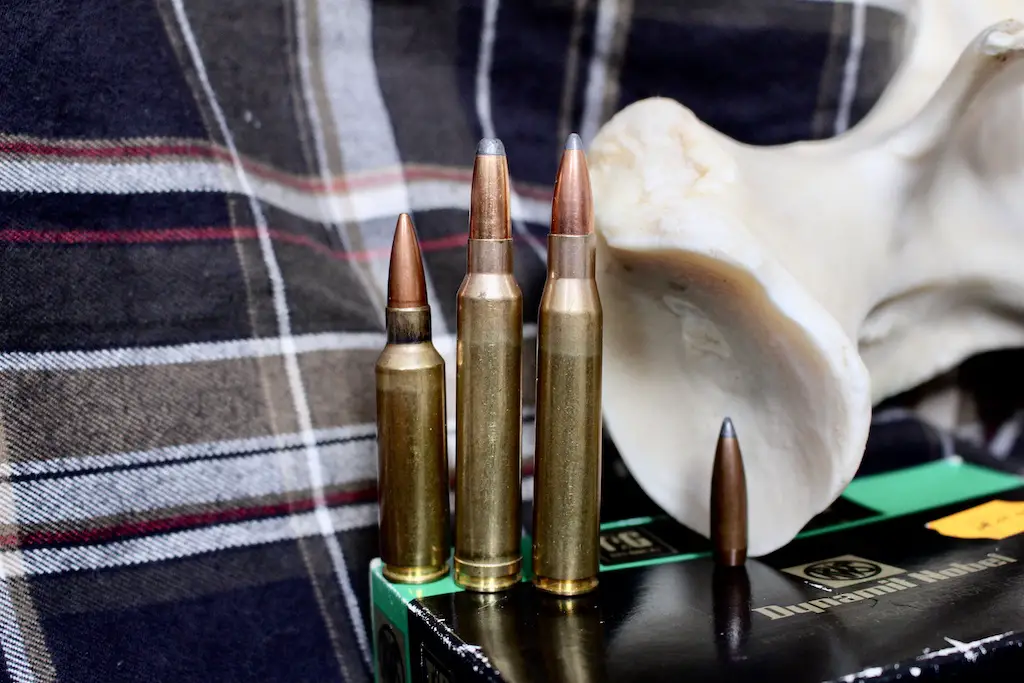
The .323″ cartridges split the difference between the .308 and .338 calibers favorably, offering a good blend of weight, speed and fairly aerodynamic shapes.
The newer 325 Winchester Short Magnum (also known as the 325 WSM) not only uses the same diameter bullet, but it’s also virtually a ballistic twin to the German Magnum 8 mm cartridge and is another good but uncommon choice.
However, the 8x68mm cartridge requires a full standard length action and is thus bigger than the short action 325 WSM.
While there are indeed some benefits to short action cartridges, the WSM-series of cartridges in general can be finicky when feeding from some magazines due to their sheep shoulder angle combined with thier short overall length.
On the other hand, their fatter and shorter powder column tends burns a bit more efficiently. That’s why the Winchester cartridge gets away with a few grains less powder while still giving practically identical velocities, which will result in a little bit less recoil.
The 8mm Remington Magnum (also known as the 8mm Rem Mag), a handloaders cartridge only today, will add a little bit of additional velocity to what the 8x68mm S can deliver. However, it requires a full magnum length rifle action to do so.
And the 8 mm Rem Mag, which never really caught on with the general public to begin with, definitely seems to be on its way towards obscurity.
In terms of availability, I think this German fast 8mm cartridge is the best .323 diameter magnum option today for use on large game by those who don’t handload themselves. With over 10 different factory loads and a good number of quality single shot and bolt action rifles (like the Blaser R 8 and the Sauer 404), new or used, from various manufacturers, the logistics of working with the 8x68mm S are pretty straightforward in Europe.
8x68mm S Cartridge Size
The 8x68mm S has an overall length of 3.425″ (87mm), a case length of 2.658″ (67.5mm), and a rim diameter of .512″ (13mm).
With a maximum length of 3.425″, it’s a touch longer than the normal “standard” for a long action rifle in the 30-06 Springfield (3.34″ overall length). However, Mauser 98 rifles can accommodate the new cartridge with some simple modifications either at the factory (in the case of rifles purpose built for the 8×68) or by a gunsmith (in the case of existing rifles getting rechambered for the new cartridge).
The 8x68mm S case can hold approximately 86 grains of water (though this varies with cartridge cases from different manufacturers) and is loaded to a maximum average pressure of 63,820psi (CIP).
The cartridge uses a beltless case with a rebated rim gently sloped shoulder angle of just over 14 degrees.
| Cartridge | 8x68mm S |
|---|---|
| Bullet Diameter | .323″ (8.2mm) |
| Case Length | 2.658″ (67.5mm) |
| Maximum Overall Length | 3.425″ (87mm) |
| Rim Diameter | .512″ (13mm) |
| Case Capacity | 86.0gr H20 |
| Max Pressure (CIP) | 440.0 MPa (63,820 psi) |
Burning all the powder the relatively large 8x68mm case hold requires rather long barrels to avoid excessive velocity loss. A barrel length of 23.6 (600mm) or even 25.6 inches (650mm) ensures complete burn of the progressive powders.
Those longer barrels also keep muzzle blast in check. I find the crack of any cartridge to be less uncomfortable and sharp when fired from barrels that are a bit longer.
8x68mm S rifles typically have a 1-11″ (or 280mm) rifling twist rate. That works very well, even with thin jacketed cup and core bullets, for the most common bullet weights of 180-220 grains (11.7g to 14.3g).
Handloaders can broaden the spectrum of weights, for example with full metal jacket 124grain bullets from Prvi Partizan for plinking or predator control.
8x68mm S Ballistic Performance
To further demonstrate the capabilities of the 8x68mm S, let’s take a look at the load my father has traditionally used for most of his hunting.
The now defunct cartridge company Hirtenberger used to produce a load with a 200 grain Nosler Partition bullet at a muzzle velocity of 2,936 fps. Though the cartridge works well with both light and heavy bullets, 200 gr bullets seem to be a sweet spot where speed and weight balance perfectly for the highest impact energy.
The table below shows the performance of that 200gr Partition bullet (.426 BC) with a 200 yard zero and a 10mph full value crosswind.

As you can see, this particular load hits like Thor’s Hammer and carries over 2,000 ft-lbs of energy out to 400 yards (and over 2,300 ft-lbs out to 300 yards)!
Since the physically pretty large cartridge offers quite a bit of room for powder, combining it with a lighter bullet opens the door for blazing fast velocities and almost laser flat trajectories for the first few hundred yards.
This might come in handy when you want to use the same gun for deer or pronghorn in open terrain (or game like chamois up in the Alps) and like a long maximum point blank range. You can get an idea of that when you fire Blaser’s tipped lead free CDC (Controlled Deformation Copper) bullets weighing 170 grains in Blaser factory ammunition.
The table below shows the performance of that 170gr CDC bullet (.398 BC) with a 200 yard zero and a 10mph full value crosswind.

There aren’t many true long range projectiles in the 8 mm bullet diameter. But since few people will choose this round for ELR matches, that’s not a big deal. Nonetheless, I’ll show you how a .323 bullet with the .640 BC of the 225 grain Cutting Edge MTH (Match-Tactical-Hunting) bullet performs out to 500 yards when loaded to a muzzle velocity of 2,700 fps.

Notice how much wind deflection improves with that high BC loading?
Plus, this extremely efficient bullet easily carries the most kinetic energy out to 500 yards out of these three loads, making this a great load for those wanting to use the 8x68mm S at long distances.
The three tables above pretty much sum up what the 8x68mmS cartridge is: an incredibly effective and hard hitting hunting cartridge for the ungulates of the world.
While not perfect in every aspect, you’ll need to search hard for a more reliable cartridge. Most handloaders find the cartridge to be easy to handload for regarding accuracy, so a commercial handloader should be able to supply you with a similar load if you don’t load yourself.
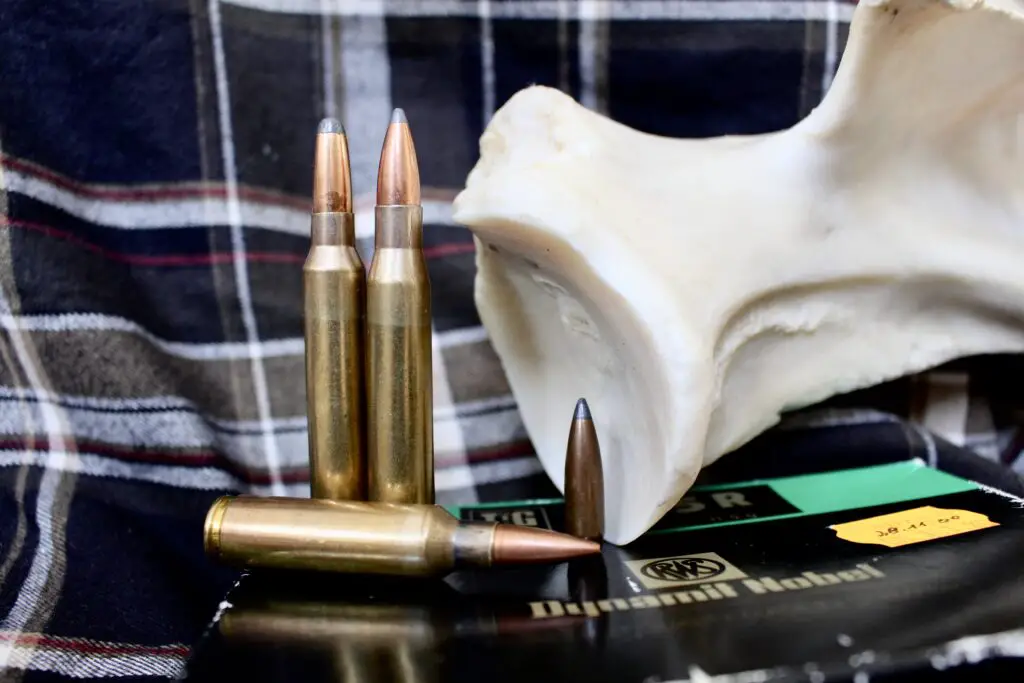
While I wouldn’t necessarily describe it as a true sister cartridge, the .300 Winchester Magnum is probably the most similar in terms of use in the field and could be described as the American counterpart to the 8x68S. Or vice versa.
Loaded with a 200 grain Nosler Partition in Nosler‘s Trophy Grade line, it is equally useful.
The same weight bullet with its narrower diameter flies a bit slower (MV of 2750 fps for 3357 ft-lbs of energy), but should retain more velocity downrange due to the subsequently higher BC of .481. Using the 180 grain version of the bullet alters that a bit. Practically, all the mentioned loads are too close to one another to crown a king.
They all more than suffice for elk hunting.
The 8mm/.323 inch caliber will probably never be popular in North America, but it’s still highly regarded in Europe.
But if someone is interested in a hard hitting cartridge choice with a larger frontal surface than that of a .300, the 8x68mmS from 1939 will get the job done, especially if you need to crack through heavy bones to bring down large critters.
The 8x68mm S can be darn effective in Africa in the right hands. To that end, I recorded an entire podcast episode on classic Africa hunting cartridges with renowned Professional Hunter and author Kevin Robertson. In this episode, we talk about the pros, cons, and recommended uses for almost everything from the 243 Winchester all the way up to the 600 and 700 Nitro Express.
This is a fantastic episode, so just click the appropriate link below to listen to our discussion on your preferred podcast app. Be sure to hit that “Subscribe” or “Follow” button in your podcast app to receive future episodes automatically (for free)!
Classic Africa Hunting Cartridges Podcast
Apple | Google | iHeart | Spotify
NEXT: BEST 6.5 CREEDMOOR AMMO FOR HUNTING ELK, DEER, & OTHER BIG GAME
NEXT: BEST GIFTS FOR HUNTERS
Enjoy this article on the 8x68mm S? Please share it with your friends on Facebook and Twitter.
Make sure you subscribe to The Big Game Hunting Podcast and follow The Big Game Hunting Blog on Facebook, Instagram, Twitter, and YouTube.
John McAdams is a proficient blogger, experienced shooter, and long time hunter who has pursued big game in 8 different countries on 3 separate continents. John graduated from the United States Military Academy at West Point and is a veteran of combat tours with the US Army in Iraq & Afghanistan. In addition to founding and writing for The Big Game Hunting Blog, John has written for outdoor publications like Bear Hunting Magazine, The Texas State Rifle Association newsletter, Texas Wildlife Magazine, & Wide Open Spaces. Learn more about John here, read some of John’s most popular articles, and be sure to subscribe to his show: the Big Game Hunting Podcast.

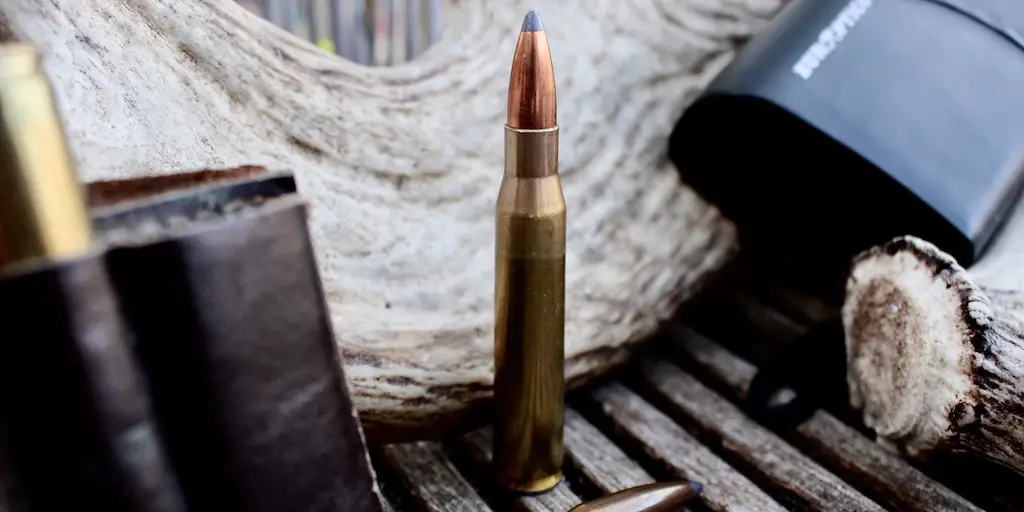
Any clue to anyone in the US that sells or reloads this ammunition? I have a K98 that was rebarrelled in this round and can’t find any.
I know RWS and Norma both load 8x68mm ammunition and sometimes their stuff gets imported into the USA. I’m unfortunately not aware of any US based companies that load this round or where you can find any in stock. Sorry I couldn’t be more helpful!
8mm (.323) cartridges do quite well on game. Even the 8×57 which I consider the granddaddy of most smokeless powder cartridges.